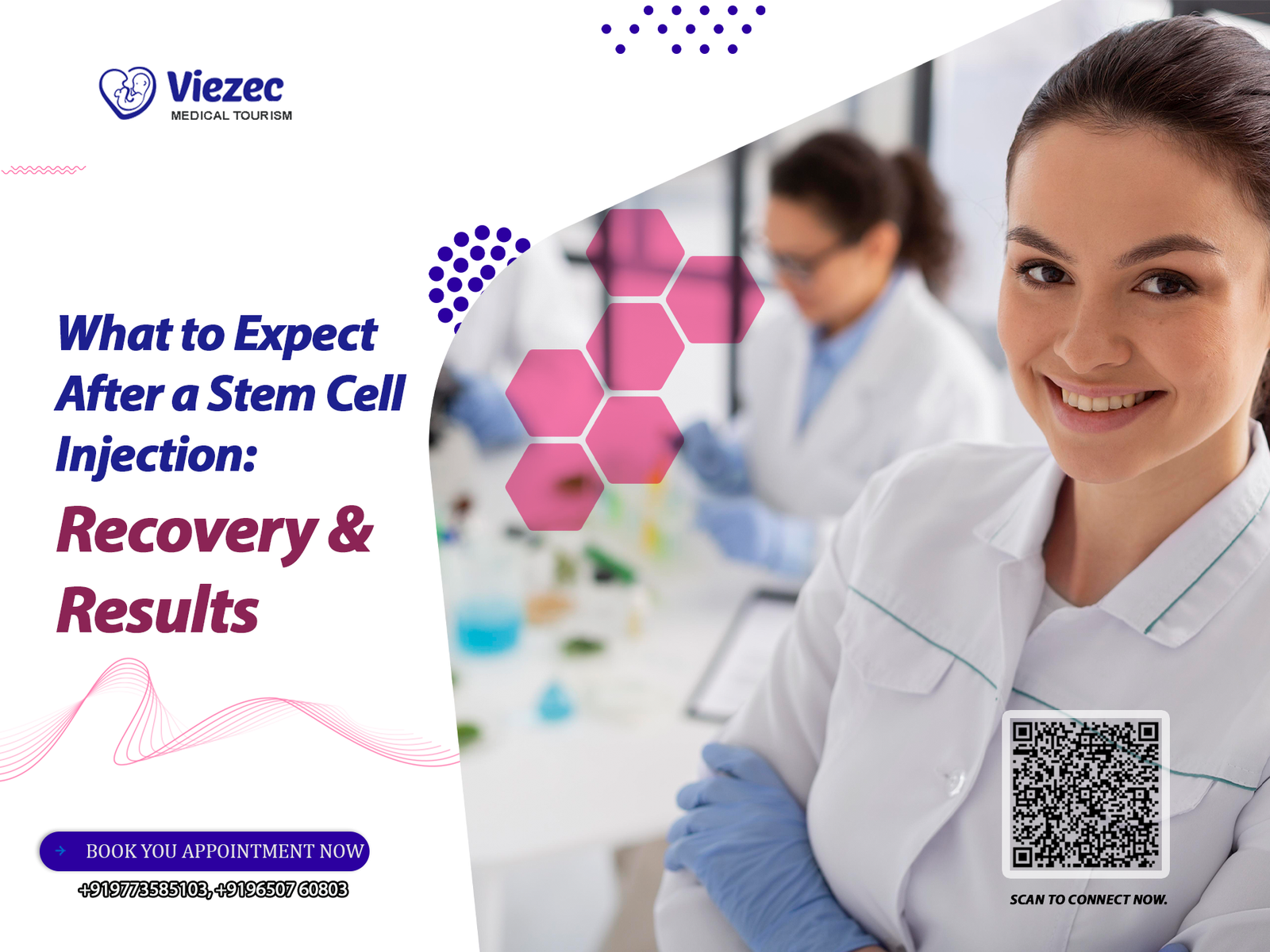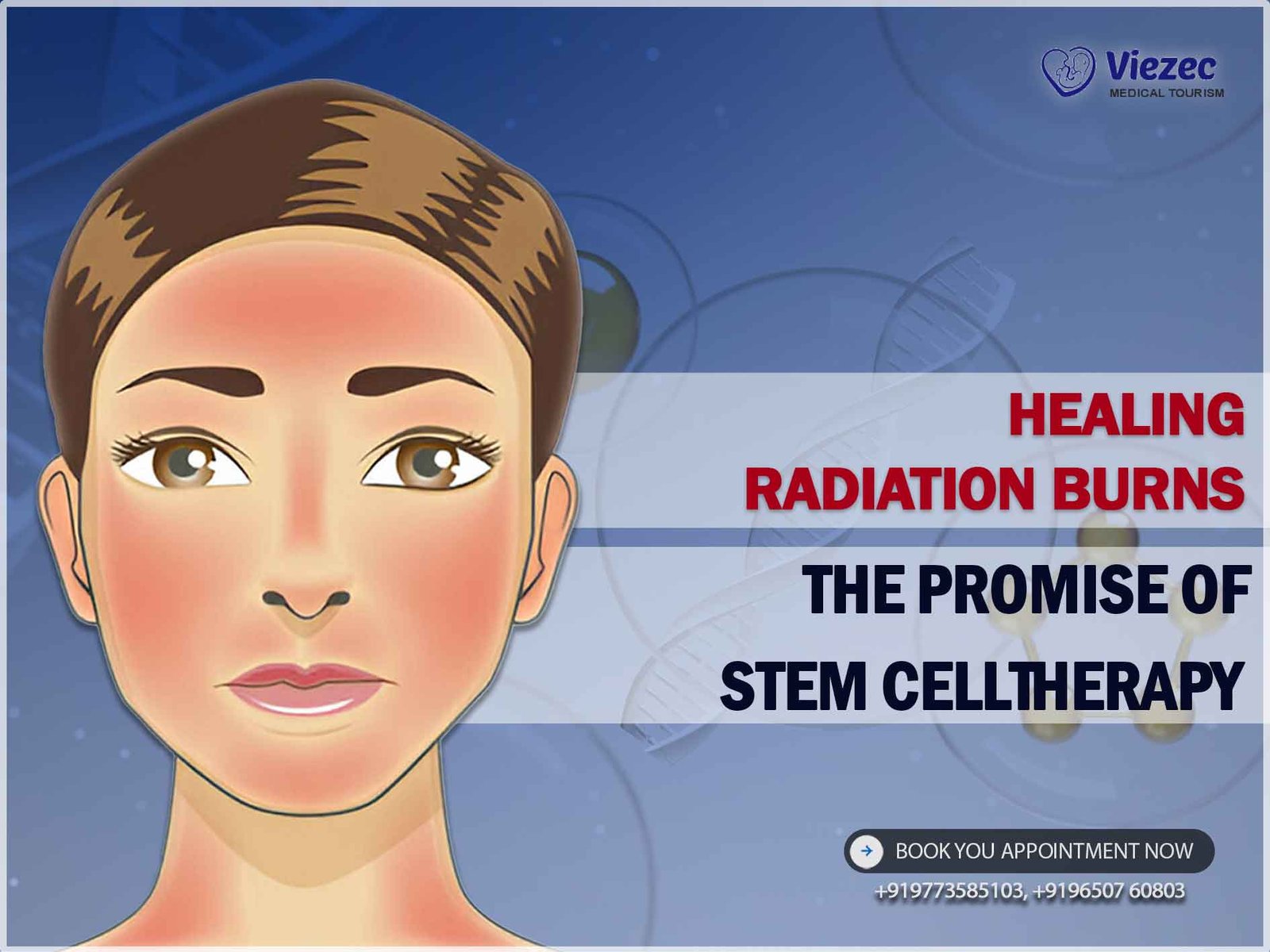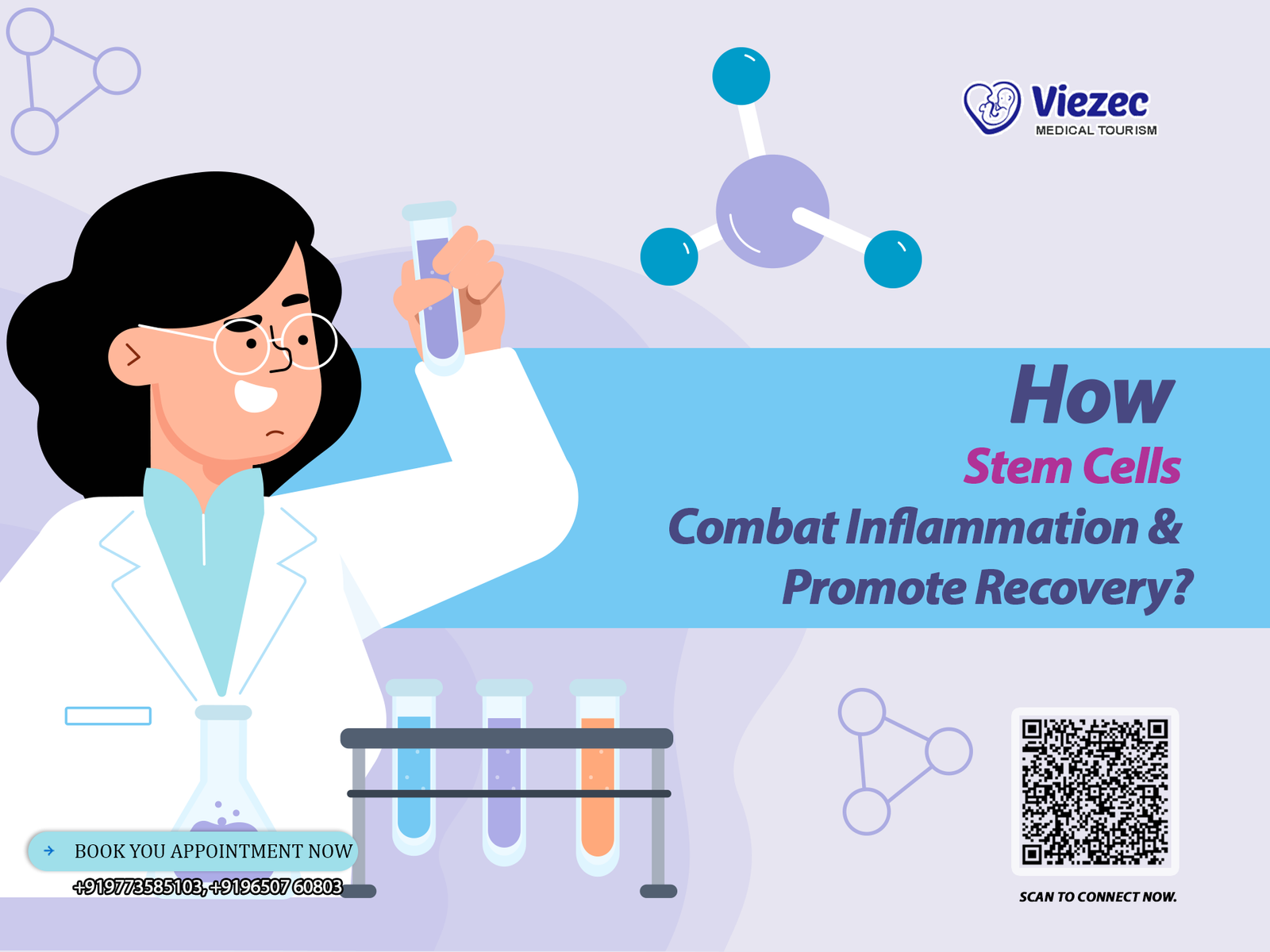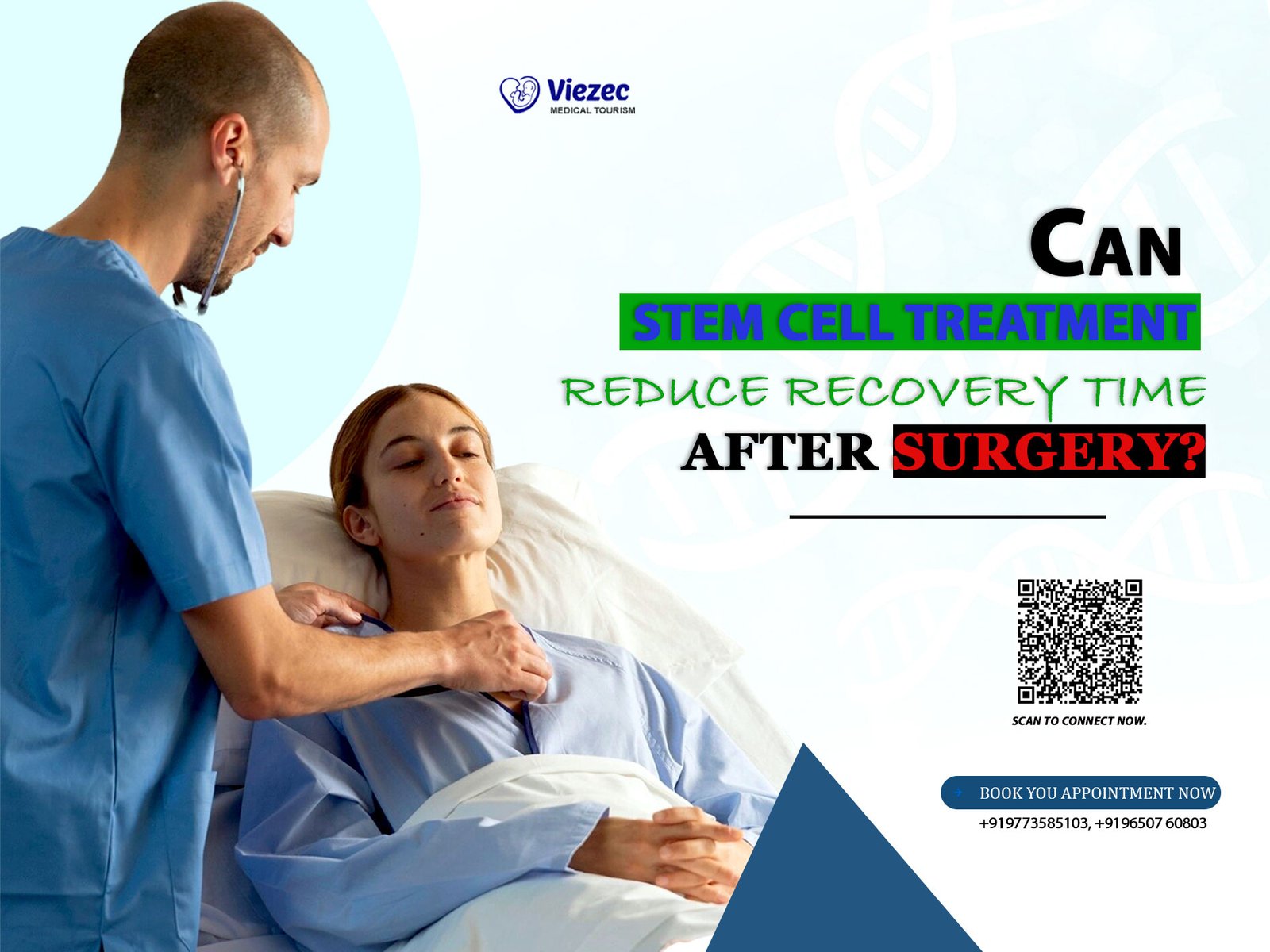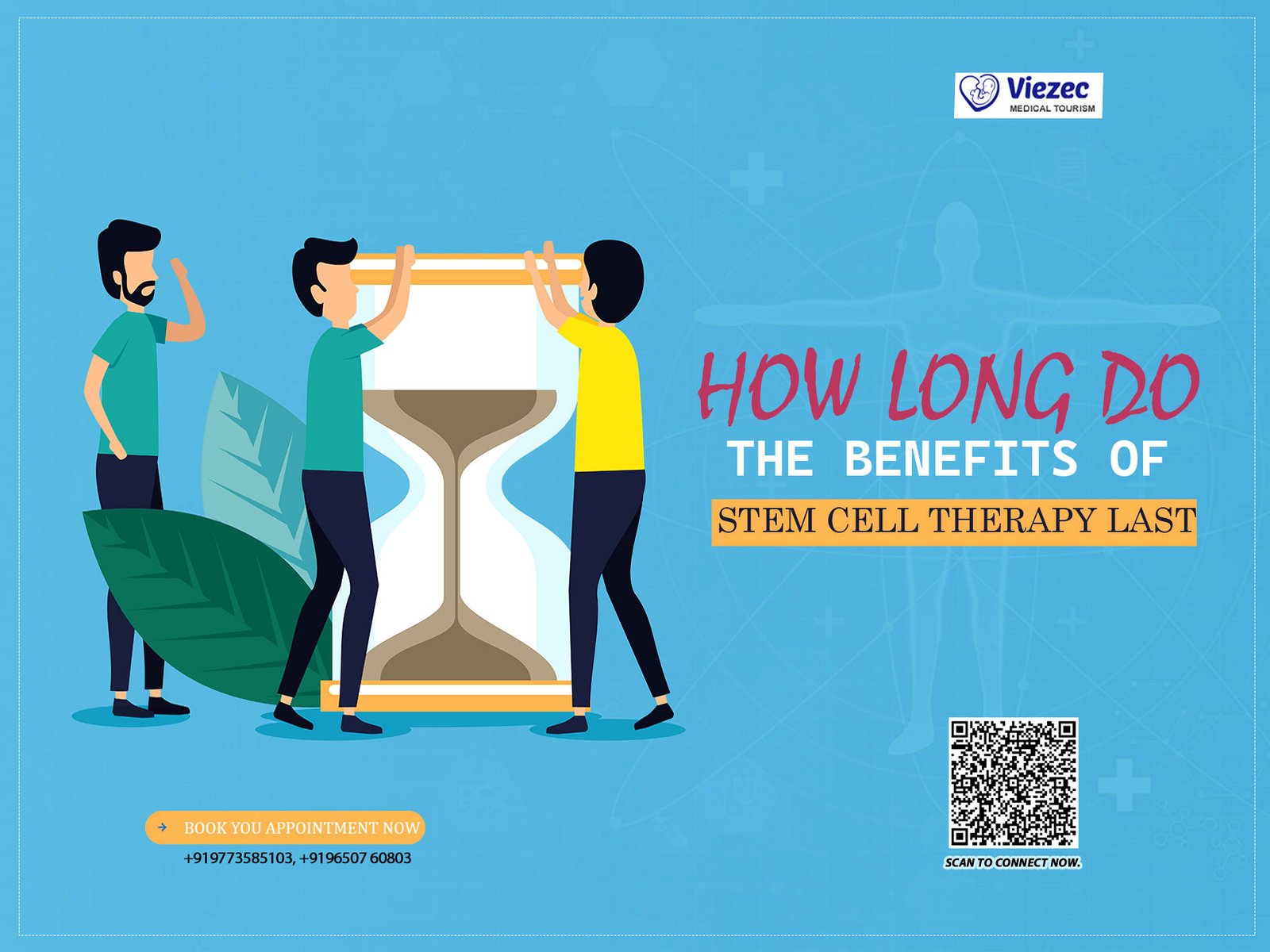Stem cell therapy has emerged as a groundbreaking treatment, offering hope for those with chronic pain, injuries, or degenerative conditions. This article explores what to expect after a stem cell injection, from immediate recovery to long-term results. Stem cell injections involve introducing stem cells—unique cells capable of regenerating tissue—into damaged areas to promote healing. Unlike traditional treatments, this therapy harnesses the body’s natural repair mechanisms. Whether you’re considering it for joint pain, tissue damage, or another condition, understanding the recovery process and potential outcomes is key. This guide breaks down each phase, from the first hours post-injection to months of healing, while addressing side effects, activity guidelines, and factors influencing success. By the end, you’ll have a clear picture of how stem cell therapy works and what lies ahead on your recovery journey.
Overview of Stem Cell Therapy
Stem cell therapy is a regenerative medicine approach that uses stem cells to repair damaged tissues or organs. These cells, often harvested from bone marrow, fat tissue, or donated sources like umbilical cords, have the remarkable ability to transform into specialized cells, such as cartilage or muscle. The therapy has gained popularity for treating conditions like arthritis, tendon injuries, and even neurological disorders. Unlike conventional treatments that merely manage symptoms, stem cell therapy aims to address the root cause by promoting tissue regeneration. It’s minimally invasive, typically administered via injection, and appeals to those seeking alternatives to surgery. While research is ongoing, early results are promising, making it a buzzword in medical innovation. Understanding its purpose and mechanisms helps set realistic expectations for recovery and results after your injection.
Purpose of Stem Cell Injections
The primary goal of stem cell injections is to stimulate the body’s healing process in areas where natural repair has stalled. For example, in osteoarthritis, stem cells may be injected into a joint to regenerate cartilage and reduce inflammation. In sports injuries, they target torn ligaments or tendons to restore function. The therapy also aims to alleviate pain, improve mobility, and potentially delay or avoid invasive procedures like joint replacement. By delivering a concentrated dose of stem cells to the injury site, doctors hope to jumpstart tissue repair and enhance the body’s regenerative capacity. The purpose varies by patient—some seek pain relief, others functional restoration—but the overarching intent is to leverage stem cells’ unique properties to heal what the body alone cannot. This sets the stage for what you’ll experience post-injection.
How Stem Cells Work in Healing
Stem cells are the body’s master builders, capable of dividing and differentiating into various cell types needed for repair. When injected into a damaged area, they release signaling molecules called cytokines that reduce inflammation and recruit other cells to aid in healing. Some stem cells may directly transform into the tissue type required, like cartilage or muscle, while others stimulate local cells to regenerate. This dual action—anti-inflammatory and regenerative—makes them powerful allies in recovery. In specific neurological disorders, researchers are exploring the potential of using stem cells for Huntington’s to slow progression and support neural regeneration. The process isn’t instantaneous; it unfolds over weeks to months as the stem cells integrate and influence their environment. Factors like the injection site, the patient’s health, and the stem cell source (autologous or allogeneic) affect how effectively they work. Understanding this gradual mechanism helps explain the timeline of recovery and results you’ll encounter post-treatment.
Ready to Take the Next Step in Your Recovery?
Immediate Post-Injection Phase
What Happens Right After the Injection?
Once the stem cell injection is complete, the procedure itself is quick—often under an hour—but the immediate aftermath begins the healing journey. You’ll likely spend a short time in the clinic for observation, ensuring no acute reactions occur. The injected area may feel tender or stiff as the stem cells settle in. Doctors typically use local anesthesia, so numbness might linger for a few hours. Some patients report a sensation of fullness or pressure at the site, which is normal as the body adjusts. You’ll receive instructions on care, such as keeping the area clean and avoiding strain. This phase is about giving the stem cells a stable environment to start their work. While it’s tempting to expect instant relief, the real effects build over time, making this initial period a critical foundation for recovery.
Common Initial Reactions and Side Effects
Post-injection, your body may respond with mild side effects as it adapts to the stem cells. Soreness, swelling, or redness at the injection site are common, lasting a day or two. Some experience a temporary increase in pain, dubbed a “flare-up,” as the stem cells trigger inflammation to kickstart healing. Fatigue or a low-grade fever might occur as your immune system reacts. These reactions are typically mild and resolve quickly, but they can vary based on the treatment area and your body’s sensitivity. Allergic reactions are rare, especially with autologous (your own) stem cells, though donor cells carry a slight risk. Bruising or minor bleeding at the puncture site may also appear. Knowing these are normal helps ease concerns, but monitoring their intensity ensures you catch anything unusual early.
Managing Pain and Discomfort
Pain after a stem cell injection is usually manageable with simple strategies. Ice packs can reduce swelling and numb soreness—apply them for 15-20 minutes every few hours. Over-the-counter pain relievers like acetaminophen are often recommended, though your doctor may advise against anti-inflammatory drugs (e.g., ibuprofen) that could interfere with stem cell activity. Elevating the treated area, if possible, minimizes swelling. Rest is key; avoid overexertion to prevent worsening discomfort. Some clinics suggest topical creams or prescribe mild pain medication for stronger relief. Staying hydrated and relaxed also supports your body’s response. If pain escalates beyond mild-to-moderate levels or persists longer than expected, it’s worth a call to your provider. Effective pain management in this phase ensures the stem cells can work without added stress to the treatment site.
Recommended Rest and Activity Restrictions
Rest is non-negotiable immediately after a stem cell injection. For the first 24-48 hours, doctors advise avoiding strenuous activity to protect the injection site and let the stem cells settle. If the injection was in a joint, like a knee or shoulder, you might need to limit weight-bearing or repetitive motions. Crutches, slings, or braces may be suggested to stabilize the area. Light walking or gentle stretching might be okay, but only with medical approval. Driving could be restricted if the treated area affects mobility or if sedatives were used. The goal is to minimize disruption to the stem cells’ early integration. These restrictions typically ease after a few days, but overdoing it risks delaying healing. Following your doctor’s tailored plan sets you up for a smoother recovery in the days ahead.
Short-Term Recovery (First Few Days to Weeks)
Typical Healing Timeline in the First Few Days
The first few days post-injection mark the start of active recovery. By day one, initial soreness or swelling may peak, then gradually subside. By day three, many notice reduced discomfort, though the treated area might still feel tender. Stem cells begin releasing growth factors, sparking inflammation that’s essential for healing—don’t be alarmed if it feels slightly worse before improving. Within a week, most injection-site reactions (redness, bruising) fade, and you may sense subtle changes, like less stiffness. Sleep and rest remain crucial, as your body directs energy to repair. This timeline varies—joint injections might progress faster than muscle treatments—but it’s a slow build. Patience is vital; visible improvements are still weeks away. Tracking daily changes can help you gauge progress and spot anything off, ensuring you stay on course for the next phase.
Swelling, Redness, and Inflammation: What’s Normal?
Swelling and redness are your body’s natural responses to a stem cell injection, signaling that healing is underway. Mild swelling might last 2-5 days, peaking early then tapering off. Redness around the site, often warm to the touch, typically fades within a week. Inflammation is the stem cells’ calling card—it’s how they rally repair processes—so a slight uptick in discomfort is expected. What’s normal? Think localized, manageable symptoms that don’t spread or worsen dramatically. Excessive swelling (tight, shiny skin), intense heat, or redness expanding beyond the injection area could hint at trouble. Ice and rest usually keep these in check, but persistent or escalating symptoms warrant attention. Knowing the difference between healing inflammation and a problem ensures you’re proactive without overreacting during this delicate early recovery window.
Medications to Avoid and Pain Management Options
During short-term recovery, some medications can hinder stem cell effectiveness. Non-steroidal anti-inflammatory drugs (NSAIDs) like ibuprofen or aspirin reduce inflammation, which sounds good but can disrupt the stem cells’ repair signals—avoid them unless your doctor says otherwise. Steroids, too, might suppress the process. For pain, acetaminophen is a safer bet, targeting discomfort without affecting inflammation. If stronger relief is needed, your doctor might prescribe a short-term opioid or recommend topical analgesics. Natural options like turmeric or arnica (if approved) can complement care. Always disclose all supplements and meds to your provider, as interactions matter. The focus is on supporting, not stifling, the stem cells’ work. With the right approach, you’ll manage pain effectively while letting your body harness the therapy’s full potential in these critical first weeks.
Signs of Infection or Adverse Reactions
While rare, infections or adverse reactions can occur, so vigilance is key. Signs of infection include increasing redness, warmth, or swelling beyond a few days, paired with pus, fever (over 100.4°F), or chills. Pain that intensifies rather than eases could also signal trouble. Adverse reactions might show as severe fatigue, rash, or shortness of breath, especially with donor stem cells. Bruising or bleeding that worsens, or neurological symptoms like dizziness, are red flags. These differ from normal healing, which trends toward improvement. If you spot these, don’t wait—contact your doctor immediately. Quick action can prevent complications. Keeping the injection site clean and following care instructions lowers these risks. Most patients sail through this phase, but knowing what to watch for ensures peace of mind and a swift response if needed.
When to Contact Your Doctor
Knowing when to call your doctor can make or break your recovery. Reach out if pain spikes suddenly or persists beyond a week without improvement. Fever above 100.4°F, excessive swelling, or pus at the site scream infection—don’t delay. If the treated area becomes numb, weak, or loses function unexpectedly, that’s a concern too. Systemic symptoms like nausea, rapid heartbeat, or breathing issues could indicate a rare reaction, especially with allogeneic cells. Even if you’re unsure, err on the side of caution; it’s better to rule out problems early. Your doctor might adjust your plan, order tests, or prescribe treatment to nip issues in the bud. Regular check-ins are part of the process, but these urgent signs demand immediate attention to keep your healing on track and safe.
Activity and Rehabilitation Guidelines
Activity in the first weeks is a balancing act—move enough to stay mobile, but not so much that you stress the treated area. For joint injections, light walking might be okay by day three, but avoid high-impact moves like running. If it’s a muscle or tendon, gentle stretching could start after a week, guided by your doctor or physical therapist. Rest remains critical; overexertion risks displacing stem cells or delaying repair. Rehabilitation often begins with passive range-of-motion exercises, progressing as pain subsides. Avoid lifting heavy weights or twisting the area. Listen to your body—mild discomfort is fine, sharp pain isn’t. These guidelines evolve weekly, tailored to your condition and response. Sticking to them builds a foundation for stronger, safer recovery as you transition to more active healing in the months ahead.
Returning to Daily Activities: What’s Allowed?
Easing back into daily life depends on the injection site and your progress. By week one, light tasks like desk work or short walks are often fine, assuming no pain spikes. Driving might resume if the treated area (e.g., a knee) isn’t needed for control and you’re off sedatives. Household chores should stay minimal—skip vacuuming or lifting for at least two weeks. If your job involves physical labor, expect a longer break, possibly 4-6 weeks, with medical clearance. Social outings are okay if they don’t strain the site. Your doctor will greenlight each step based on swelling, pain, and stability. Pushing too hard risks setbacks, so gradual is the name of the game. By respecting these limits, you’ll reclaim routine without compromising the stem cells’ delicate early work.
Physical Therapy and Movement Restrictions
Physical therapy (PT) often starts 1-2 weeks post-injection, depending on your condition and doctor’s plan. Early sessions focus on gentle mobilization—think guided stretches or water therapy—to boost circulation without overtaxing the site. Restrictions remain firm: no sudden twists, heavy loads, or repetitive strain. For a knee injection, squats might be off-limits, while a shoulder treatment bans overhead lifts. PT builds incrementally, adding resistance as healing progresses, usually by weeks 3-4. Pain is your guide; it should stay mild. Skipping therapy or ignoring limits can stall gains, so consistency matters. A skilled therapist tailors exercises to your response, enhancing stem cell integration. This phase bridges short-term rest and long-term strength, ensuring the treated area regains function safely. Follow their lead, and you’ll see steady improvement without risking setbacks.
Exercise and Strength Building After the Injection
Exercise ramps up slowly after a stem cell injection, typically after 2-4 weeks, once inflammation settles. Start with low-impact options like walking, cycling, or swimming to rebuild stamina without jarring the site. Strength training—light weights or resistance bands—might begin around week 6, focusing on surrounding muscles to support the treated area. Avoid explosive moves (e.g., jumping) or heavy lifting until 2-3 months, pending approval. For a joint, isometric exercises (static holds) can safely build strength early on. Progress hinges on pain levels and stability; don’t rush it. Your doctor or therapist will adjust based on your condition—say, arthritis versus a tendon tear. The goal is gradual loading to reinforce stem cell repairs, not strain them. Done right, this phase turns early healing into lasting resilience.
Dietary Recommendations for Optimal Recovery
Nutrition fuels stem cell therapy’s success, especially in the first weeks. Protein—think lean meats, eggs, or beans—supports tissue repair, aiming for 1.2-2 grams per kilogram of body weight daily. Anti-inflammatory foods like fatty fish (salmon, mackerel), berries, and leafy greens reduce swelling naturally. Vitamin C (citrus, peppers) and zinc (nuts, seeds) boost collagen and healing. Stay hydrated; water aids cell function and flushes toxins. Avoid sugar and processed carbs, which can spike inflammation and slow progress. Alcohol might interfere with stem cell activity, so limit it. Some doctors suggest supplements like omega-3s or turmeric, but check first. A balanced, whole-foods diet primes your body to maximize the injection’s benefits. Pairing this with rest and activity guidelines creates a synergy that accelerates recovery and sets up long-term gains.
Have Questions About Your Stem Cell Treatment?
Long-Term Healing and Results (Weeks to Months)
What to Expect After One Month
By one month post-injection, the initial turbulence of recovery often gives way to subtle progress. Swelling and soreness should be minimal, replaced by a sense of stabilization in the treated area. You might notice less stiffness or a slight ease in pain during daily tasks—early signs the stem cells are knitting things together. For some, joint mobility improves faintly; for others, it’s a reduction in chronic ache. Don’t expect miracles yet; this is the groundwork phase. Energy levels may rise as your body shifts from reacting to repairing. Sleep and nutrition still matter, supporting the stem cells’ ongoing work. If progress feels slow, that’s normal—conditions like arthritis take longer than, say, a muscle tear. Check in with your doctor to ensure you’re on track as you head into deeper healing over the next few months.
Progress Over Three to Six Months
Between three and six months, stem cell therapy’s effects often become more tangible. By month three, many report noticeable pain reduction—perhaps 30-50% less—or improved range of motion. A knee might bend further; a shoulder might lift with less protest. By six months, tissue regeneration peaks for some, with cartilage or tendon repairs showing on imaging in ideal cases. Strength and function creep upward, especially with consistent rehab. Results vary: osteoarthritis patients might feel sustained relief, while tendon injuries could near full recovery. Plateaus can happen, but incremental gains continue if lifestyle supports it. Setbacks—like overexertion—can stall this, so patience remains key. Your doctor may assess progress with tests or scans, refining expectations. This window reveals whether the therapy met its mark or if tweaks are needed for your unique healing arc.
When Will I See Noticeable Results?
Noticeable results from stem cell injections depend on timing and your condition. Minor improvements—like less stiffness—might emerge by 4-6 weeks, but significant changes often wait until 3-6 months. For joint issues, pain relief might precede mobility gains; for tissues like tendons, strength could lead. Studies suggest peak benefits around 6-12 months as stem cells fully integrate and repair matures. Factors like age, injury severity, and adherence to rehab shift this timeline—younger patients or milder cases may see faster wins. Don’t judge too soon; unlike surgery, this is a slow burn. Tracking symptoms (pain scores, movement range) helps spot trends. Your doctor can predict based on your baseline, but variability is the rule. When results hit, they’re often a quiet shift—less pain one day, more ease the next.
Factors That Influence the Effectiveness of Stem Cell Therapy
Effectiveness hinges on multiple variables. Age matters—younger bodies often regenerate faster due to robust cell activity. The condition’s severity plays a role; early-stage arthritis responds better than bone-on-bone cases. Stem cell source counts too—autologous cells (your own) may integrate seamlessly, while donor cells could face immune hurdles. Injection precision, guided by ultrasound or MRI, boosts success by hitting the right spot. Lifestyle amplifies outcomes: smoking or poor diet can dampen repair, while exercise and nutrition enhance it. Chronic diseases like diabetes might slow healing. Even genetics influence how stem cells perform. Your doctor’s expertise—cell quality, dosage, technique—ties it all together. These factors explain why one patient thrives while another sees modest gains, underscoring the need for personalized expectations and care in this evolving field.
Who Is at Higher Risk for Complications?
Certain groups face elevated risks with stem cell injections. Older adults may heal slower, increasing infection or poor outcome odds due to weaker immune systems or comorbidities. Those with chronic conditions—diabetes, autoimmune diseases, or heart issues—might see delayed recovery or immune flare-ups, especially with donor cells. Smokers or heavy drinkers risk impaired regeneration from reduced blood flow and nutrition. Patients with severe tissue damage (e.g., advanced arthritis) could experience less benefit, raising frustration over complications. Obesity adds strain on joints, potentially offsetting gains. People on blood thinners or immunosuppressants need careful monitoring for bleeding or infection. A history of allergies or past procedure reactions flags higher sensitivity. Your doctor assesses these risks pre-treatment, tailoring plans to minimize them, ensuring safer navigation through the therapy’s uncertainties for vulnerable individuals.
How to Minimize the Risk of Side Effects
Cutting side effect risks starts with preparation and follow-through. Choose a skilled provider—experience with imaging-guided injections lowers mishaps like nerve damage. Pre-treatment, disclose your full medical history; conditions like diabetes or medications like NSAIDs need adjusting. Post-injection, keep the site clean and dry to dodge infection—skip soaking it in pools or tubs. Follow activity limits religiously; overdoing it invites inflammation or displacement of cells. Ice and elevation tame swelling, while avoiding alcohol or smoking supports circulation. Stick to prescribed pain relief—NSAIDs can backfire. Attend follow-ups to catch issues early. A nutrient-rich diet bolsters your body’s response, reducing fatigue or flares. Open communication with your doctor—reporting odd symptoms fast—nips problems in the bud. These steps tilt the odds toward smooth healing, sidelining complications effectively.
Discover How Stem Cell Therapy Can Help You
Comparing Results and Effectiveness
How Does Stem Cell Therapy Compare to Surgery?
Stem cell therapy and surgery tackle similar issues—pain, dysfunction—but differ sharply in approach and recovery. Surgery, like joint replacement, offers immediate structural fixes but demands weeks of downtime, rehab, and risks like infection or clots. Stem cell therapy is gentler, an outpatient shot with minimal invasion, aiming to regenerate tissue naturally. Recovery is faster upfront—no incisions to heal—but results unfold slowly, over months, versus surgery’s quicker payoff. Success rates vary: surgery boasts high reliability for severe cases (e.g., 90% for knee replacements), while stem cells shine in early-to-mid-stage conditions, with 60-80% reporting improvement per studies. Surgery’s permanence contrasts stem cells’ potential need for repeat shots. Cost and risk lean toward stem cells for milder issues, but surgery wins for advanced damage. Your choice hinges on severity, goals, and tolerance for gradual versus instant relief.
Success Rates Based on Condition and Treatment Area
Success rates for stem cell therapy fluctuate by condition and site. For knee osteoarthritis, studies show 60-85% of patients experience pain relief and better function within 6-12 months, best in mild-to-moderate cases. Tendon injuries, like rotator cuff tears, report 70-80% improvement with proper rehab. Spine conditions (e.g., disc degeneration) are trickier—50-70% see benefits, but evidence is less robust. Smaller joints (hands, ankles) often hit 65-75% success, aided by lower stress loads. Chronic wounds or neurological uses trail, with 40-60% effectiveness, still experimental. Treatment area matters: well-vascularized zones heal faster than cartilage-heavy joints. Data’s promising but patchy—controlled trials lag behind anecdotes. Your odds improve with early intervention, quality cells, and adherence, though no guarantees exist in this personalized, evolving therapy landscape.
Individual Variability in Treatment Outcomes
No two patients respond to stem cell therapy identically, thanks to a web of variables. Age skews results—30-year-olds often outpace 70-year-olds in regeneration speed. A marathon runner’s knee might heal differently than a sedentary person’s due to fitness and blood flow. Severe versus mild damage shifts outcomes; early arthritis fares better than end-stage. Genetics quietly steer cell performance, while lifestyle—diet, sleep, stress—amplifies or dulls effects. Even mental outlook might nudge recovery via inflammation pathways. One patient might celebrate 80% pain relief by month three; another waits a year for 50%. Treatment specifics—cell count, source, delivery—add more layers. This variability frustrates but reflects biology’s complexity. Tracking your progress against your baseline, not others’, keeps expectations grounded in your unique healing story.
Follow-Up and Additional Treatments
How Often Should You Follow Up with Your Doctor?
Follow-ups anchor your stem cell therapy journey, catching hiccups and gauging progress. Typically, you’ll see your doctor 1-2 weeks post-injection to check for reactions like infection or swelling. A month in, they’ll assess early healing—pain, mobility—and tweak rehab plans. At three months, expect a deeper dive, possibly with imaging (MRI, ultrasound) to peek at tissue changes. Six months often marks a key checkpoint for results, refining long-term strategies. Beyond that, yearly visits might track durability, especially for chronic conditions. Frequency varies—acute injuries may need less; degenerative diseases more. Don’t skip these; they spot needs for adjustments or boosters. Between visits, report odd symptoms fast. This rhythm ensures you’re not flying blind, aligning care with your body’s response to keep recovery on course and optimized.
Do You Need More Than One Injection?
One injection might not suffice, depending on your case. Mild conditions—like early tendonitis—may heal with a single dose, with 60-70% success in studies. Chronic or severe issues, like advanced arthritis, often need boosters; one shot might ease pain, but a second (6-12 months later) could rebuild tissue further. Research suggests 30-50% of patients opt for repeats within two years, especially for joints under stress. Cell count, quality, and your body’s uptake dictate this—low responders may need more. Symptoms guide the call: if pain creeps back or gains stall, discuss it. Imaging or functional tests can confirm. It’s not failure; it’s tailoring. Your doctor weighs benefits versus risks (cost, minor side effects) to decide. For some, one’s enough; for others, it’s a multi-step path to peak relief.
Signs That You Might Need Additional Treatment
Clues you need another injection emerge over time. If pain or stiffness returns after initial relief—say, by month six—it might signal incomplete repair or ongoing degeneration. Limited mobility persisting past 3-6 months, despite rehab, suggests the first dose didn’t fully take. Imaging showing minimal tissue growth (e.g., thin cartilage) could back this up. Worsening function—struggling with stairs after a knee shot—raises flags too. Fatigue or inflammation spikes might hint at stem cell exhaustion in chronic cases. These aren’t subtle; they contrast with steady progress. Don’t assume failure—conditions evolve, and one round might not match your damage’s scale. Check with your doctor; they’ll compare your baseline, response, and goals. A second shot could bridge the gap, turning partial wins into lasting recovery if timed right.
Lifestyle and Long-Term Wellness
How to Maintain Results and Promote Healing
Sustaining stem cell therapy gains demands ongoing effort. Keep moving—low-impact exercise like yoga or swimming strengthens the treated area without strain, locking in mobility. Rest still matters; overtaxing risks undoing repairs. Nutrition stays critical—protein, antioxidants, and hydration feed tissue health long-term. Avoid smoking; it chokes blood flow, starving stem cell work. Stress management—meditation, sleep—curbs inflammation that could erode benefits. Stick to rehab plans even after “recovery”; consistency cements gains. Weight control eases joint stress, stretching results further. Monitor symptoms—small dips might just need tweaks, not panic. Think of it as tending a garden: the injection plants the seed, but your habits nurture it. Patients who commit see benefits linger years, not months. It’s less about perfection and more about steady, smart choices to cradle the therapy’s promise.
Lifestyle Changes That Enhance Stem Cell Therapy Benefits
Small shifts can turbocharge stem cell outcomes. Swap processed junk for whole foods—think salmon, nuts, and kale—to cut inflammation and fuel repair. Exercise smarter, not harder: 30 minutes of brisk walking daily boosts circulation, feeding stem cells oxygen. Sleep 7-9 hours; it’s when healing peaks. Drop excess weight—each pound off a knee multiplies relief. Quit smoking—studies show it slashes regeneration by up to 40%. Limit booze; it dulls cell function. Stress less—cortisol from chronic worry hampers recovery, so try deep breathing or mindfulness. Stay hydrated; water keeps tissues supple. These aren’t optional extras—they’re amplifiers. Patients blending these habits report sharper pain drops and faster function gains versus slackers. It’s your therapy, but lifestyle’s the multiplier that turns a good result into a great one.

